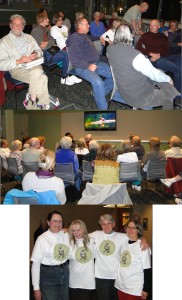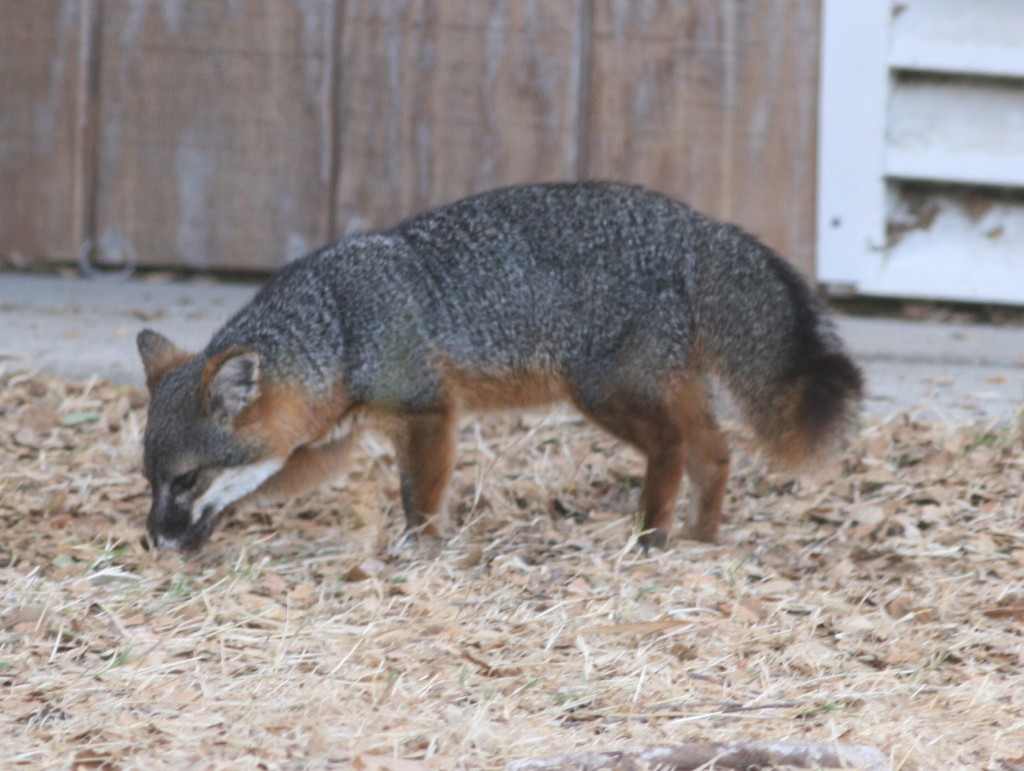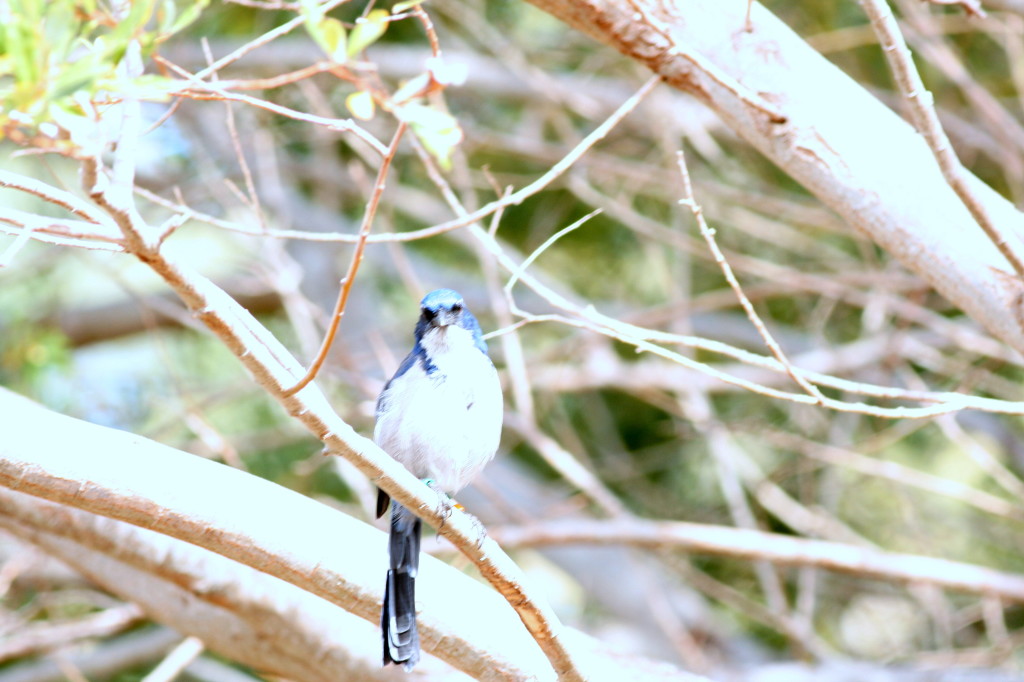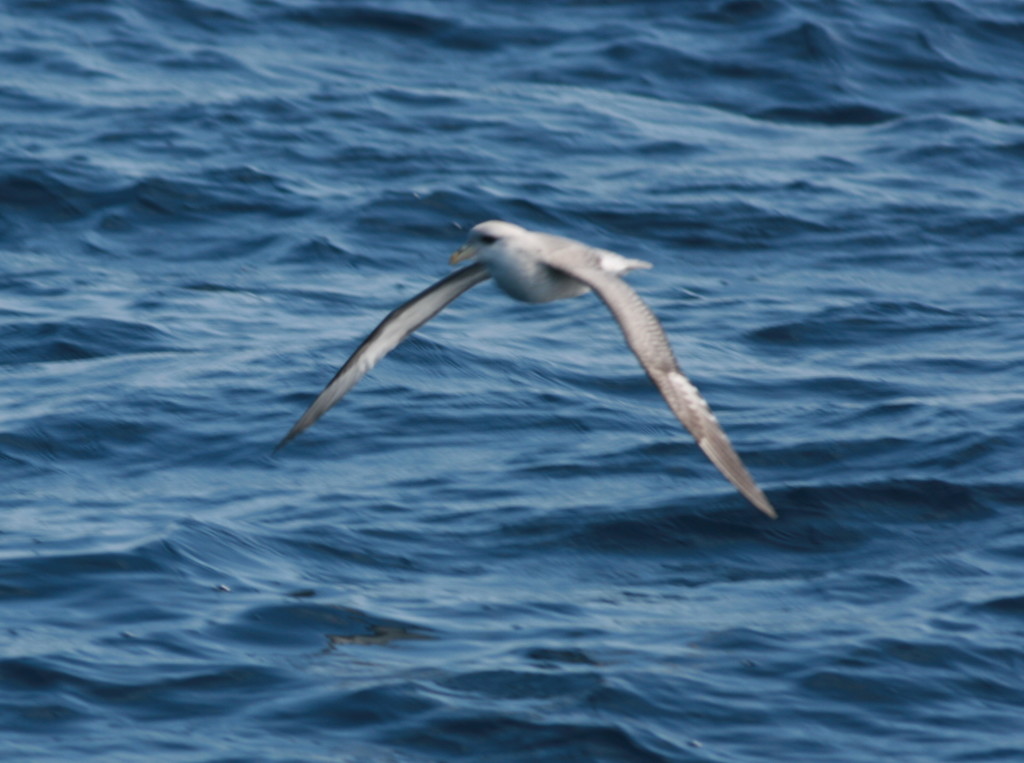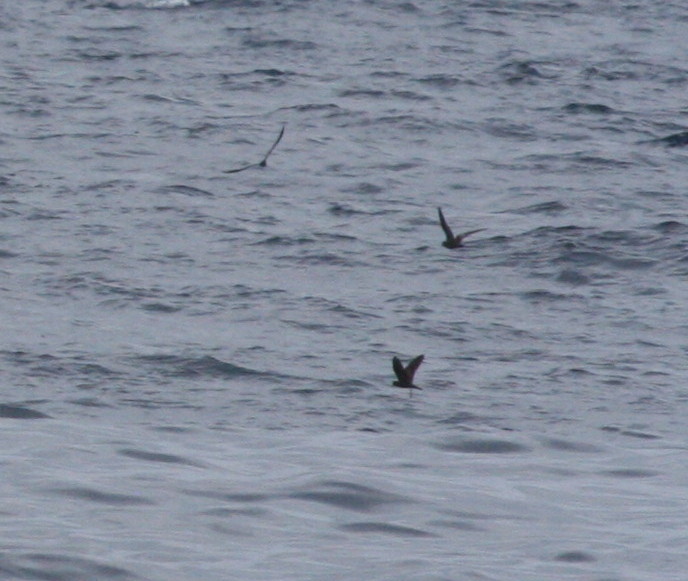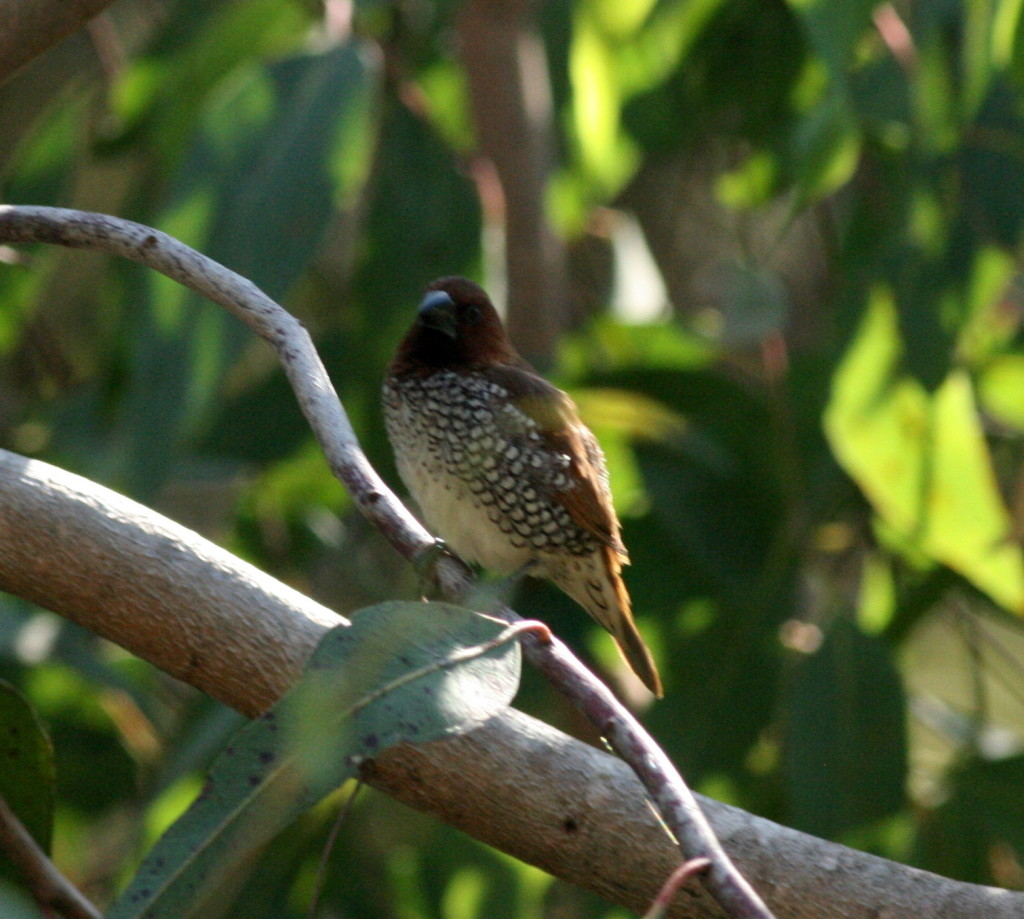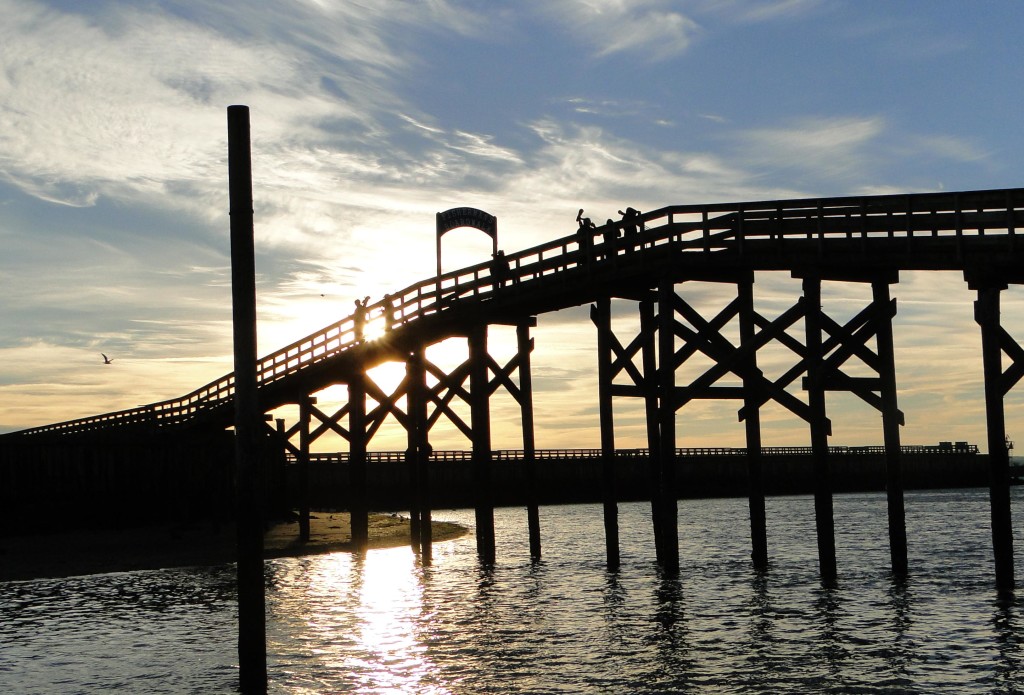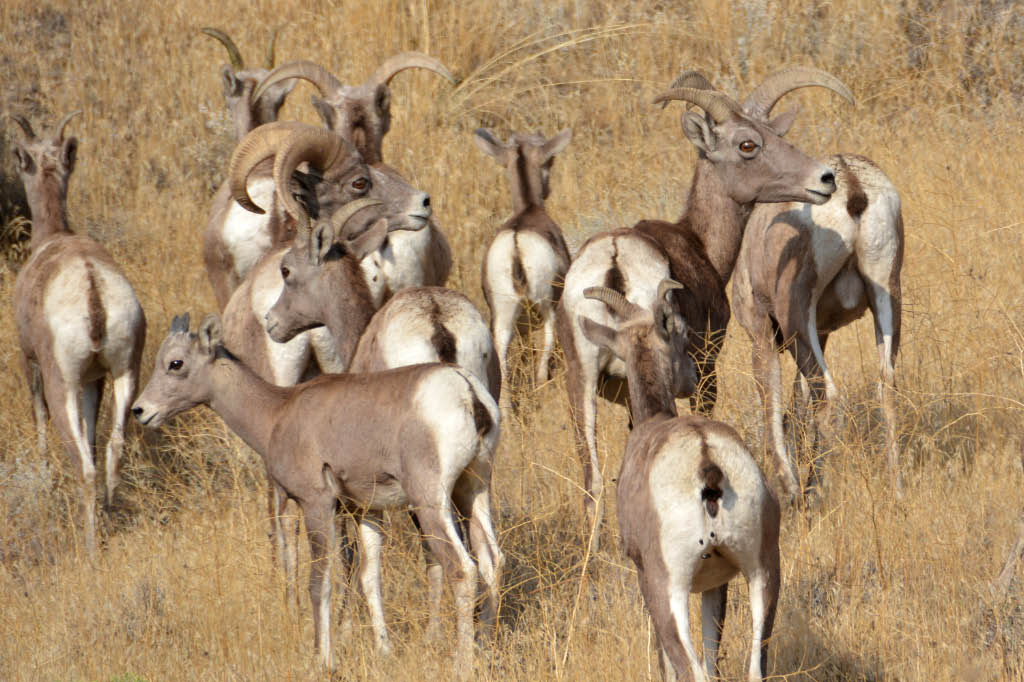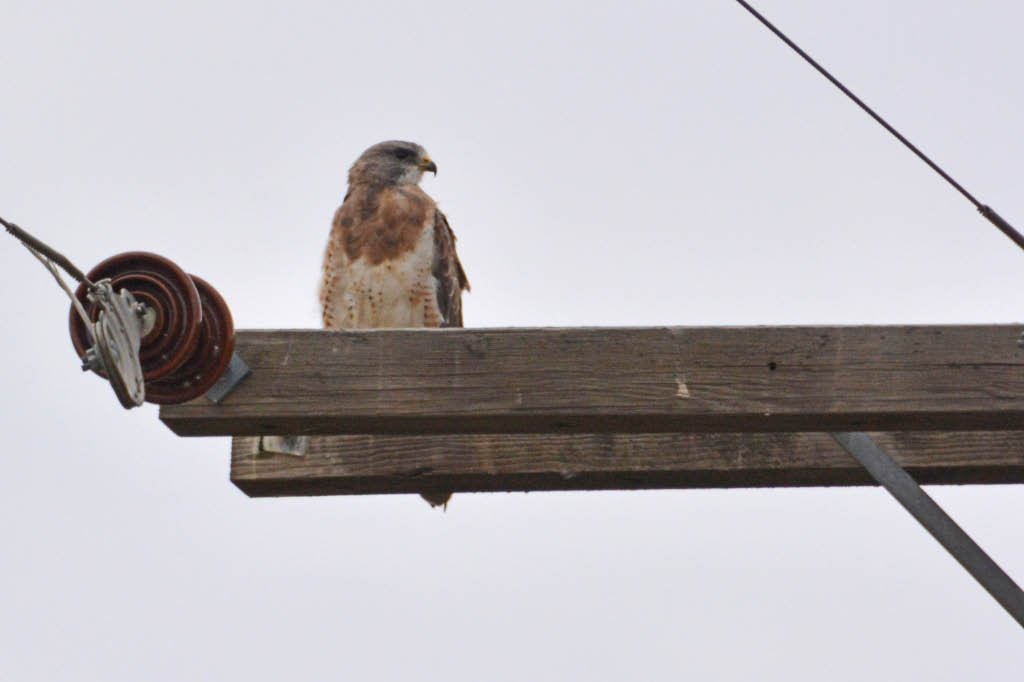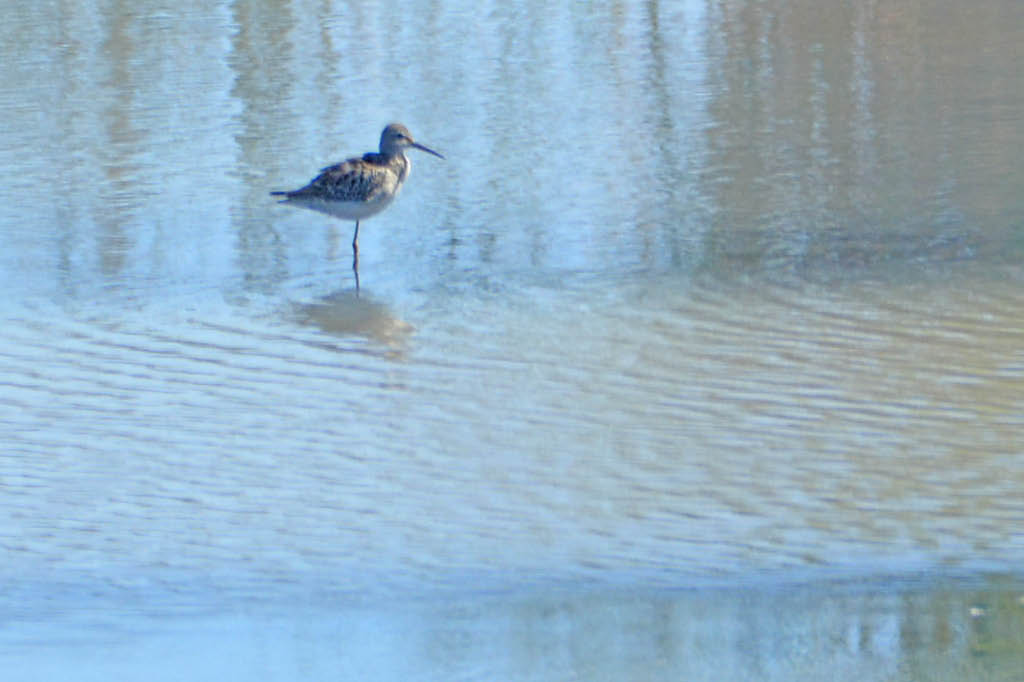Bud Anderson’s Hawk Class / Western WA Hawk Watching Class / Tacoma 8 Jan. – 5 Feb 2014 Wednesdays, 7-9pm University of Puget Sound / Class meets for 2 hours, one night per week for five weeks. 2014 cost is $175 per person. Includes a full day field trip. Minimum registration is 20, but hoping for lots more. He will add extra field trip dates if the class is large enough. Exact dates are Jan.8, 15, 22, 29 and Feb.5. / TO REGISTER: Call (253) 591-6439 OR register online using Bar code 69459 at: https://www.metroparkstacoma.net/onlineregistration/Activities/ActivitiesAdvSearch.asp
Category Archives: Field Trips
Kayaker rescues Owl
One of the photography forums I frequent provided a link to this cute, heart-warming story of a rescued owl off Finland
Ruth and Tobey
Hi there, here is Ruth at ManorCare Health Services in Tacoma, enjoying a moment during her recovery with her Jack Russel Terrier “Tobey.” Ruth will probably be at this nursing home for physical therapy for the next 4-6 weeks. Thanks so much for all your well wishes. Ruth greatly appreciates everyones support. Sincerely, Shep Shep Thorp, VMD The Animal Emergency Clinic Puget Sound Veterinary Referral Center 5608 South Durango Street Tacoma, WA 98409 sthorp@theaec.com 253-370-3742
Oct 24, 2013: Movie Night at ABC!
Movie Night at ABC! Oct 24, 2013 We celebrated two years of ABC with movies and theater candy! Thanks, Ryan Wiese and others for making the video and audio both happen! Since November and December are filled with other stuff, we probably won’t meet again until the fourth week of January. What would you like to see happen in 2014? With our group, anything is possible. Longer field trips are being bandied about. Contact Ken Brown with any ideas for programs, classes, field trips at kennethwbrown@hotmail.com, and cc to Ed Pullen at edwardpullen@gmail.com and Diane Y-Q at Avosetta@hotmail.com. The world is waiting! Several ABC’ers might be drafted to give a report on how to get to Ecuador and other nearby areas, logistically speaking and for less than a king’s ransom. Volunteer for this if you have tips! First up, we saw a short subject that everyone in attendance identified with strongly! “Far East Tour” by Cara Borre and Asta Tobiassen, “far east” meaning far eastern Washington! Their trip in June this year had everyone nodding and laughing at the right times. We laughed and we cried!! As we speak they are flying off to Maui, and they might just see more birds. More of their stuff can be seen on Youtube at their Wild Thing Productions webpage: https://www.youtube.com/user/wildthingproduction1?feature=watch Then we watched the feature film, “Birders: The Central Park Effect,” which brought back great memories to a number of us including Kay & Ed Pullen, who had actually birded with Star Saphir, the bird leader profiled, who died earlier this year. Also David Marshall lived for 2 years in NYC and saw 21 or 22 warblers there in one short morning! One of the writers profiled, Jonathan Franzen, later published a #1 bestseller that featured a Cerulean Warbler on its cover and as a main character, “Freedom,” which also landed Jonathan on the cover of Time Magazine. (See: http://en.wikipedia.org/wiki/Freedom_%28Jonathan_Franzen_novel%29). For those who asked how to get the movie, you can buy it on line at Amazon and other places: http://www.amazon.com/Birders-Central-Effect-Regina-Alvarez/dp/B009VRVGLK/ref=sr_1_1?s=movies-tv&ie=UTF8&qid=1382676097&sr=1-1&keywords=birders+the+central+park+effect Christmas Bird Counts coming up! Get ready! Some of our group at movie night (click to enlarge):
Santa Cruz Island, a San Diego Pelagic Trip Plus Nutmeg Mannikin
Kay and I took off for Southern California on Thursday Oct 9th with plans to visit Santa Cruz Island the next morning, followed by a visit with family and me sneaking away for a pelagic trip out of San Diego on the Sunday of the weekend. It worked out about as well as we could have hoped, with great weather, obliging target species and calm seas.
We flew to LAX and met Kay’s brother Keith and sister Mary and took off for Ventura where the Island Packer’s boat ride for Santa Cruz Island was scheduled to leave at 9AM the next morning. We checked ahead to assure that we would leave, given that much of the traffic on the boat trip usually go to the National Park on Santa Cruz Island which was closed due to the government shut-down. Fortunately Prisoner’s Cove where the endemic Santa Cruz scrub jay is most easily found, and where we were booked to land is on Nature Conservancy land and the trip was still on. Even better without the extra stops the boat captain obligingly extended the ride to cruise past Anacapa Island where Blue-footed boobies were roosting regularly on the cliffs. On the trip over we got to see lots of Black-vented shearwaters, good numbers of Pink-footed shearwaters but no murrelets. We were thrilled to find 16 immature BFBO on the cliffs with lots of cormorants, pelicans and gulls. At least two were mature enough to have blue feet giving great looks to all of us.
On to Santa Cruz Island, where the Santa Cruz Scrub Jays were easily found, studied and photographed.
We had about 3 hours on the island and due to the National Park closure the usual hike on their land was inaccessible. Graciously the Nature Conservancy agreed to allow us to hike onto their property, usually off-limits, and we had chances to see the endemic subspecies of Santa Cruz bewick’s wren, song sparrow, and fox. The fox was especially obliging. It is a tiny fox, just 6 lbs, and was not bashful at all, seeming very habituated to visitors.
Keith joined me Sunday on the San Diego 12 hour deep water pelagic trip. You would never confuse this with a Westport deep water trip. Skies were sunny, seas 2-3 foot swells, and nary a single passenger added to the steady stream of popcorn chum off the stern. The price of $60 was also wonderfully low. The Sea and Sage Audubon Society sponsored the trip, and did a great job. We traveled through several habitats, and found lots to see all day long. On the way out well within sight of shore Black-vented shearwaters dominated, with Red-necked phalaropes common and Western Gulls adult and all ages along with Heermann’s gulls the dominant larids. At the 9 mile bank, about 12.3 miles out of San Diego (why not 12 mile bank?) we had good numbers of Pink-footed shearwaters and the Black-vented thinned out. The only alcids were numerous Cassin’s Aucklets. On the 2 hour ride out to the 30 mile bank we were busy looking at less frequent Pink-footed shearwaters, lots of Northern Fulmars of all color morphs, and in incredible number of Pomerine Jaegers. I estimated 70+ for the day. One Parasitic Jaeger was seen early in the trip, before getting to the 9-mile bank if I remember correctly.
Shortly prior to the 30 mile bank the trip leader got us on a white bird on the water, which was flushed up by a Pomerine Jaeger. It was an adult Red-billed Tropicbird and put on a great show being harassed for several minutes by the jaeger. It flew in front of the boat, away into the distance ahead and high into the sky, then circled back directly in front of us and past the bow again, all the while in aerial acrobatics. Later on the 30 mile bank we had distant looks at small numbers of Black Storm-petrels and Least Storm-petrels at a feeding flock on some floating dead fish material.
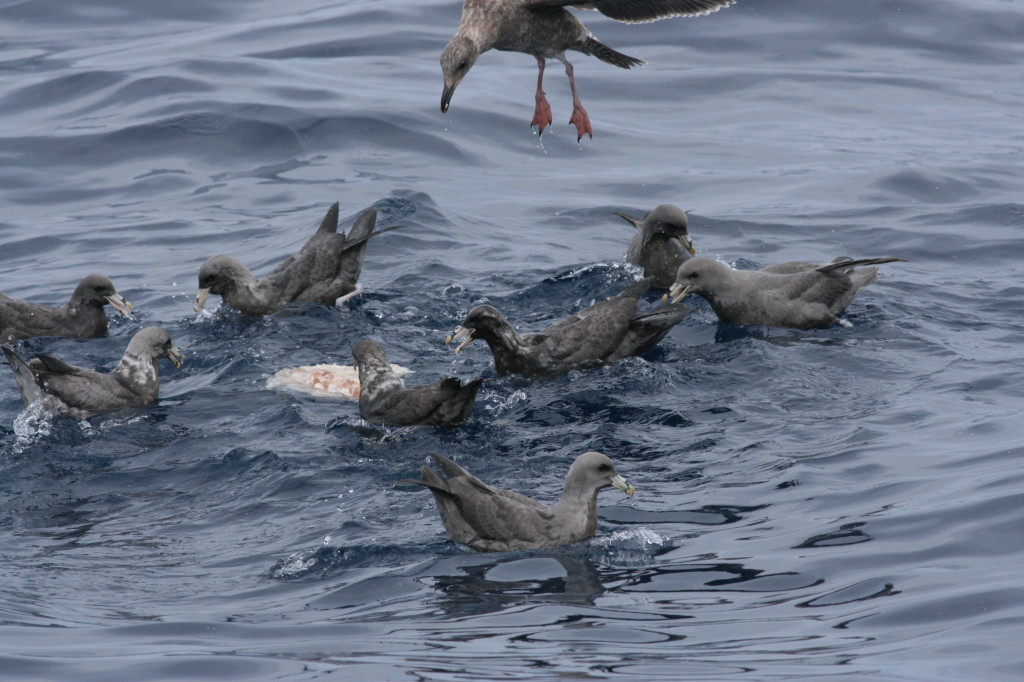 Lot’s of fulmars and Pink-footed shearwaters were joining the flock. On the ride in we had the only Black-footed Albatross fly past the boat, and then in the San Diego trough had the jackpot of the trip, the first Great Shearwater record in S California waters. This bird gave us great looks and photographs by all.
Lot’s of fulmars and Pink-footed shearwaters were joining the flock. On the ride in we had the only Black-footed Albatross fly past the boat, and then in the San Diego trough had the jackpot of the trip, the first Great Shearwater record in S California waters. This bird gave us great looks and photographs by all.
After a good night sleep Kay and I celebrated our 29th anniversary on Monday by going out to a nice breakfast at Huntington Beach Central Park, before we ventured out to add Nutmeg Mannikin to our ABA list since it was added to the listable birds last month.
A great trip with 7 lifers for me.
Ken’s ABC Fall Coast Trip Oct 5-6, 2013
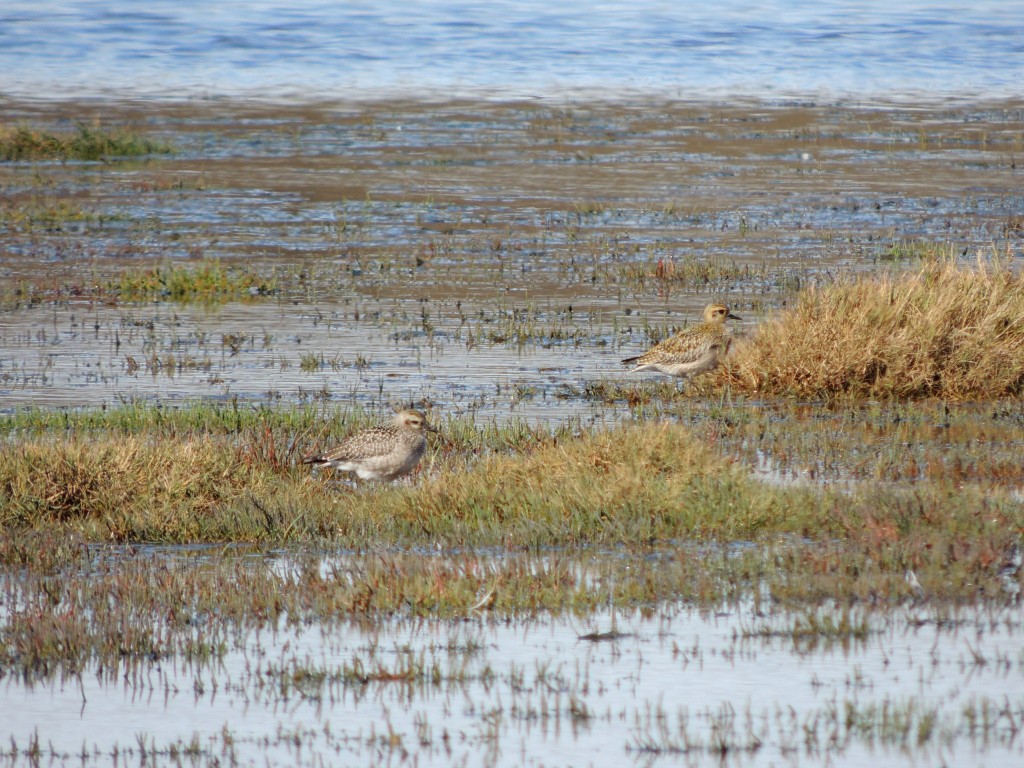
Sunshine and great views of American and Pacific Golden Plovers together (Photo by Kathleen Miller) were the highlights of our trip to the coast last weekend. After meeting at the usual I5-Hwy 512 park and ride we took foggy drives through Wenzel Slough Rd and Brady Loop. The highlight was a large flock of mixed geese, mostly Cackling, with Canada and Greater White-fronted in good numbers, with 7 Sandhill Cranes looking on from the background off Foster Rd.
Be the time we arrived at the Hoquiam STP the fog had mostly cleared, but we missed the previously reported Red-shouldered Hawk. A surprisingly few birds were on the ponds, and we wasted no time pushing on to the coast. We went to the Oyhut game range first and this was the best shorebirding of the weekend. We sorted through good numbers of Greater Yellowlegs to find at least 5 golden plovers. We has spectacular looks at both species, actually counting the 4 primary feathers projecting past the tertials in the American’s and the 3 on the Pacifics, noting that both edges of the tertials had golden spots on the Pacifics, whereas only one edge had the spots on the Americans. It was a great case study. We has good looks at Least, Western sandpipers, and Dunlin there too. Long-billed dowichers gave us good looks too.
At the jetty we found 3 “rock-pipers”, Black turnstone, Surfbird and Wandering tattler. We skipped stops at the open coast to pick up Sanderling, assured that it would show up somewhere for the trip. Not! At the Ocean Shores STP we added a Spotted sandpiper.
A good night’s sleep after the heartbreaking Husky loss to Stanford brought another sunny day Sunday.
(Photo by Diane) We started at the Westport Marina, and the hoped for 4th or 5th rockpiper species failed to oblige. Impressive numbers of Brown pelicans were noted. The Marbled godwits and Willets obliged at Tokeland and we saw our first Great Egret far away on the tide flats. Graveyard Spit and Midway Beach added little except a fast-passing Perigrine falcon at Midway. (water too deep to get to the beach) Bottle beach was a dud, with 6 Black-bellied plovers the only shorebirds noted despite perfect timing of the tides. Back at the Coast guard station at Westport we poured through about 1000 Marbled godwits but could not make any into other types. Nice looks at a Herring gull were fun there. We ended the coast birding at the Westhaven State Park area and the jetty there, where we added shorebird species #17 & 18 as a Whimbrel called loudly overhead before landing near the base of the bluff, and 4 Semi-palmated plovers were also heard nicely as they flew in with a flock of Least sandpipers. We dashed away leaving very strong winds and a rapidly approaching rain storm.
We drove through Brady Loop again on the way home, and found yet one more Pacific golden plover at a flooded field pond with 28 Killdeer. A nice way to end the weekend.
Here is the trip list for anyone interested:
Report Details
Date range: Oct 5, 2013 – Oct 11, 2013 Total # of Species: 99
Total # of Checklists: 19
Location(s): 46.9735x-123.8170 – Oct 5, 2013, 6:25 PM; Bottle Beach; Brady Loop; Hoquiam STP; Midway Beach; Ocean Shores — Bill’s Spit; Ocean Shores — Pt. Brown Jetty; Ocean Shores STP; Ocean Shores–Oyhut Wildlife Area; Tokeland; Tokeland — Graveyard Spit/Fisher Ave; US-WA-Ocean Shores- interpretive Center; Wenzel Slough Rd; Westhaven SP; Westport — Coast Guard Station/spit; Westport — Marina
Summary
Oct 5 Oct 6 Oct 7 Oct 8 Oct 9 Oct 10 Oct 11
Number of Species 85 57 — — — — —
Number of Individuals 4,510 7,890 — — — — —
Number of Checklists 11 8 — — — — —
Highest Count for a Species (sample size) Hide Sample Size
Species Name Oct 5 Oct 6 Oct 7 Oct 8 Oct 9 Oct 10 Oct 11
Greater White-fronted Goose 50
(2) — — — — — —
Snow Goose 2
(1) — — — — — —
Brant 9
(1) — — — — — —
Cackling Goose 600
(1) — — — — — —
Canada Goose 500
(5) — — — — — —
Cackling/Canada Goose 80
(1) — — — — — —
Eurasian Wigeon 1
(1) 1
(1) — — — — —
American Wigeon 400
(3) 3,000
(1) — — — — —
Mallard 170
(5) 1
(1) — — — — —
Northern Shoveler 30
(2) — — — — — —
Northern Pintail 20
(3) 800
(2) — — — — —
Green-winged Teal 30
(3) 8
(1) — — — — —
Greater Scaup 4
(1) — — — — — —
Lesser Scaup 8
(1) 2
(1) — — — — —
Surf Scoter 40
(2) 200
(4) — — — — —
White-winged Scoter 4
(1) — — — — — —
scoter sp. 20
(1) — — — — — —
Hooded Merganser 3
(2) — — — — — —
Red-breasted Merganser — 1
(1) — — — — —
Red-throated Loon — 4
(2) — — — — —
Common Loon 10
(2) 25
(4) — — — — —
Pied-billed Grebe 1
(1) — — — — — —
Horned Grebe 1
(1) 1
(2) — — — — —
Western Grebe 9
(1) 9
(2) — — — — —
Brandt’s Cormorant 1
(1) — — — — — —
Double-crested Cormorant 20
(6) 400
(6) — — — — —
Pelagic Cormorant 4
(2) 12
(3) — — — — —
Brown Pelican 20
(1) 450
(5) — — — — —
Great Blue Heron 2
(5) 18
(3) — — — — —
Great Egret — 1
(1) — — — — —
Turkey Vulture — 4
(2) — — — — —
Northern Harrier 1
(2) 1
(1) — — — — —
Red-tailed Hawk 2
(3) — — — — — —
Virginia Rail 1
(1) — — — — — —
Sandhill Crane 9
(1) — — — — — —
Black-bellied Plover 8
(1) 50
(3) — — — — —
American Golden-Plover 2
(1) — — — — — —
Pacific Golden-Plover 3
(1) 1
(1) — — — — —
Semipalmated Plover — 4
(1) — — — — —
Killdeer 10
(5) 28
(1) — — — — —
Spotted Sandpiper 1
(1) — — — — — —
Wandering Tattler 2
(1) — — — — — —
Greater Yellowlegs 25
(1) — — — — — —
Willet — 7
(1) — — — — —
Whimbrel — 1
(1) — — — — —
Marbled Godwit — 1,000
(2) — — — — —
Black Turnstone 25
(1) 4
(1) — — — — —
Surfbird 2
(1) — — — — — —
Dunlin 4
(1) — — — — — —
Least Sandpiper 40
(2) 13
(1) — — — — —
Pectoral Sandpiper 2
(1) — — — — — —
Western Sandpiper 200
(3) — — — — — —
peep sp. — 400
(2) — — — — —
Long-billed Dowitcher 9
(1) — — — — — —
Heermann’s Gull 1
(1) 40
(2) — — — — —
Mew Gull 1
(2) — — — — — —
Ring-billed Gull 20
(3) 30
(4) — — — — —
Western Gull 8
(4) 16
(5) — — — — —
Western/Glaucous-winged Gull 100
(4) — — — — — —
California Gull 24
(4) 6
(3) — — — — —
Herring Gull 4
(1) 1
(1) — — — — —
Thayer’s Gull 1
(1) — — — — — —
Glaucous-winged Gull 6
(2) 2
(2) — — — — —
Western x Glaucous-winged Gull (hybrid) 40
(3) 40
(4) — — — — —
gull sp. — 300
(4) — — — — —
Caspian Tern 6
(2) 1
(1) — — — — —
Rock Pigeon 2
(1) — — — — — —
Band-tailed Pigeon — 10
(1) — — — — —
Eurasian Collared-Dove 4
(1) — — — — — —
Mourning Dove 3
(2) — — — — — —
Belted Kingfisher 1
(1) 1
(1) — — — — —
Northern Flicker 2
(6) 1
(1) — — — — —
American Kestrel — 2
(1) — — — — —
Peregrine Falcon 1
(1) 1
(1) — — — — —
Steller’s Jay 4
(3) 16
(3) — — — — —
Western Scrub-Jay 4
(1) 1
(2) — — — — —
American Crow 12
(5) 10
(5) — — — — —
Common Raven 1
(2) 4
(3) — — — — —
Black-capped Chickadee 16
(2) — — — — — —
Marsh Wren 2
(1) 4
(1) — — — — —
Bewick’s Wren 1
(1) — — — — — —
Ruby-crowned Kinglet — 1
(1) — — — — —
American Robin 55
(5) 4
(1) — — — — —
European Starling 300
(6) 80
(4) — — — — —
Cedar Waxwing — 8
(1) — — — — —
Common Yellowthroat 1
(1) — — — — — —
Yellow-rumped Warbler 6
(2) 2
(2) — — — — —
Spotted Towhee 10
(3) — — — — — —
Savannah Sparrow 8
(4) — — — — — —
Song Sparrow 16
(5) 4
(2) — — — — —
White-crowned Sparrow 4
(1) 1
(1) — — — — —
Golden-crowned Sparrow 20
(2) — — — — — —
Dark-eyed Junco 4
(1) — — — — — —
Red-winged Blackbird 120
(2) — — — — — —
Brewer’s Blackbird 60
(2) 20
(1) — — — — —
Brown-headed Cowbird 2
(1) — — — — — —
House Finch 2
(1) — — — — — —
American Goldfinch 1
(1) — — — — — —
House Sparrow 2
(2) 1
(1) — — — — —
Boreal Owl Search: Sunrise Mt. Rainer 9-26-13
Sept 2013 ABC meeting report
On September 24, 2013, Ed Pullen gave a presentation on enhancing one’s eBird experience. Many people brought their portable devices to try out his recommendations, and several eBird heavy-hitters were there to add to the information. Truly a learning experience! Photos from the recent field trip to E. WA by Pat Damron were enjoyed, plus Jerry Broadus and Clarice Clark’s trip to the southwest to the banding convention where they birded Arizona and Utah, including Condors! We ran out of time for most of Laurel Parshall’s photos, but they can be seen here (as well as many more): http://www.flickr.com/photos/llp_unesolitaire/sets/72157635555125412/ Pictured below: Ed Pullen with eBird (click to enlarge):
Eastern WA Vagrant and Shorebird Trip
The ABC East Side passerine vagrant and Shorebird trip on the weekend of Sept 7-8, 2013 was a great weekend for shorebirds and a bit slow for migrating passerines. We had 11 participants in 4 cars and so made great time on the road, and the overall weekend gad good weather and lots of time birding without excessive driving.
Our first stop was at Gingko State Park at Vantage. The sprinklers were on and at the top we had few birds. The highlight of the stop for many was a herd of Rocky Mountain Bighorn Sheep at very close range with nursing babies and about 25 total sheep. The bird of the stop for me was a pair of canyon wrens calling incessantly and showing off at eye level close views down by the river. It was the first time for me to hear their call note well, not just their well-known song. I’ll attach e-bird lists for each stop for anyone interested in more details. See here
Next stop was Getty Cove, south of the State Park, where we found modest numbers of the expected warblers (YR, Yellow, Wilson’s) as well as Warbling Vireo. See list here. Overall not as birdy as last September, but a nice place to bird in the fall migration. On the drive back to Wanapum State Park we saw a Red-necked Grebe close in on the river just fading from its red-necked alternate plumage. At the park after a slow start we finally found a nice flock of mixed migrants, including 3 vireos Warbling, Red-eyed and Cassin’s, as well as a Townsend’s and Orange-crowned warblers among the YR flock. Also had two Western Tanagers and lots of American Robins. List here.
A quick stop on the frontage road toward Moses Lake yielded great close looks at a Swainson’s hawk on a utility pole before we got to the Winchester Rest Stop Sewage Ponds where we had a remarkable 10 species of shorebirds including American avocet, Pectoral sandpiper and Least sandpiper. See list
We headed to the Potholes Rookery site where the reported Snowy Egret was not obliging but lots of American white pelicans and had a nice fly-by of an immature Black-crowned night heron. On the way out we had some flocks of sparrows including Vesper and Lark. List here and here.
After a night at The Inn at Moses Lake and a dinner on the lake at Michaels (recommended) we spent Sunday early looking for the Eastern wood-pewee at the horse-chestnut orchard above Lind Cooley without success, though some saw a Prairie falcon there. list From there we went to Perch Point on the Potholes Reservoir. It was the highlight of the day of shore-birding with large numbers of Pectoral sandpipers, peeps, about 100 Great egrets, several gull species including some Bonaparte’s gulls with some juvenile (not formative which we usually see on first winter birds) aspect remaining. list
The rest of the day was spent circling the reservoir with several stops. Lind Cooley was not as productive as last year except at the parking lot on top where we picked up Baird’s sandpiper along with a variety of other shorebirds list. On the way back we decided to try again at the Potholes Rookery for the Snowy egret without success, but a small water hold off Dodson Rd we saw a Stilt sandpiper to round out a nice weekend of shorebirding. list
All photos thanks to Pat Damron.
Here is the list for the trip:
| Summary | |||||||||
| Sep 7 | Sep 8 | Sep 9 | Sep 10 | Sep 11 | Sep 12 | Sep 13 | |||
| Number of Species | 64 | 60 | — | — | — | — | — | ||
| Number of Individuals | 712 | 2,017 | — | — | — | — | — | ||
| Number of Checklists | 8 | 10 | |||||||
| Species Name | Sep 7 | Sep 8 | Sep 9 | Sep 10 | Sep 11 | Sep 12 | Sep 13 | ||
| Canada Goose | 45 (2) |
80 (3) |
— | — | — | — | — | ||
| Mallard | 2 (1) |
14 (3) |
— | — | — | — | — | ||
| Blue-winged Teal | 6 (2) |
— | — | — | — | — | — | ||
| Cinnamon Teal | 1 (1) |
4 (1) |
— | — | — | — | — | ||
| Northern Shoveler | — | 8 (1) |
— | — | — | — | — | ||
| teal sp. | — | 20 (1) |
— | — | — | — | — | ||
| California Quail | 2 (1) |
— | — | — | — | — | — | ||
| Common Loon | 1 (1) |
— | — | — | — | — | — | ||
| Pied-billed Grebe | 1 (1) |
— | — | — | — | — | — | ||
| Red-necked Grebe | 1 (1) |
— | — | — | — | — | — | ||
| Western Grebe | — | 20 (3) |
— | — | — | — | — | ||
| Clark’s Grebe | — | 3 (1) |
— | — | — | — | — | ||
| Western/Clark’s Grebe | — | 50 (1) |
— | — | — | — | — | ||
| Double-crested Cormorant | 80 (1) |
75 (4) |
— | — | — | — | — | ||
| American White Pelican | 150 (1) |
42 (3) |
— | — | — | — | — | ||
| Great Blue Heron | — | 4 (4) |
— | — | — | — | — | ||
| Great Egret | 45 (1) |
98 (3) |
— | — | — | — | — | ||
| Black-crowned Night-Heron | 1 (1) |
— | — | — | — | — | — | ||
| Osprey | 2 (2) |
1 (3) |
— | — | — | — | — | ||
| Northern Harrier | — | 1 (1) |
— | — | — | — | — | ||
| Cooper’s Hawk | 2 (1) |
— | — | — | — | — | — | ||
| Sharp-shinned/Cooper’s Hawk | 1 (1) |
— | — | — | — | — | — | ||
| Swainson’s Hawk | 1 (1) |
— | — | — | — | — | — | ||
| Red-tailed Hawk | 1 (1) |
1 (1) |
— | — | — | — | — | ||
| American Coot | 1 (1) |
— | — | — | — | — | — | ||
| American Avocet | 1 (1) |
— | — | — | — | — | — | ||
| Killdeer | 2 (3) |
11 (4) |
— | — | — | — | — | ||
| Spotted Sandpiper | — | 2 (2) |
— | — | — | — | — | ||
| Greater Yellowlegs | 2 (2) |
5 (4) |
— | — | — | — | — | ||
| Lesser Yellowlegs | 2 (2) |
3 (3) |
— | — | — | — | — | ||
| Stilt Sandpiper | — | 1 (1) |
— | — | — | — | — | ||
| Sanderling | — | 2 (1) |
— | — | — | — | — | ||
| Baird’s Sandpiper | — | 5 (1) |
— | — | — | — | — | ||
| Least Sandpiper | 3 (1) |
30 (3) |
— | — | — | — | — | ||
| Pectoral Sandpiper | 2 (2) |
7 (3) |
— | — | — | — | — | ||
| Semipalmated Sandpiper | 1 (1) |
1 (1) |
— | — | — | — | — | ||
| Western Sandpiper | 15 (1) |
80 (4) |
— | — | — | — | — | ||
| Long-billed Dowitcher | 1 (1) |
3 (2) |
— | — | — | — | — | ||
| Red-necked Phalarope | 1 (1) |
2 (1) |
— | — | — | — | — | ||
| Bonaparte’s Gull | — | 11 (1) |
— | — | — | — | — | ||
| Ring-billed Gull | 50 (2) |
200 (4) |
— | — | — | — | — | ||
| California Gull | 2 (2) |
8 (3) |
— | — | — | — | — | ||
| gull sp. | — | 300 (2) |
— | — | — | — | — | ||
| Rock Pigeon | 3 (1) |
6 (1) |
— | — | — | — | — | ||
| Eurasian Collared-Dove | — | 4 (1) |
— | — | — | — | — | ||
| Mourning Dove | 4 (3) |
6 (3) |
— | — | — | — | — | ||
| Vaux’s Swift | 3 (1) |
— | — | — | — | — | — | ||
| Downy Woodpecker | — | 1 (1) |
— | — | — | — | — | ||
| Northern Flicker | 2 (2) |
1 (1) |
— | — | — | — | — | ||
| American Kestrel | 1 (2) |
— | — | — | — | — | — | ||
| Peregrine Falcon | — | 1 (1) |
— | — | — | — | — | ||
| Prairie Falcon | — | 1 (1) |
— | — | — | — | — | ||
| Say’s Phoebe | 1 (1) |
— | — | — | — | — | — | ||
| Cassin’s Vireo | 1 (1) |
— | — | — | — | — | — | ||
| Warbling Vireo | 3 (3) |
1 (2) |
— | — | — | — | — | ||
| Red-eyed Vireo | 1 (1) |
— | — | — | — | — | — | ||
| Black-billed Magpie | 2 (1) |
2 (2) |
— | — | — | — | — | ||
| American Crow | 4 (2) |
4 (2) |
— | — | — | — | — | ||
| Common Raven | 4 (3) |
— | — | — | — | — | — | ||
| Tree Swallow | — | 40 (1) |
— | — | — | — | — | ||
| Bank Swallow | 4 (1) |
— | — | — | — | — | — | ||
| Barn Swallow | 40 (3) |
20 (2) |
— | — | — | — | — | ||
| Rock Wren | 3 (1) |
— | — | — | — | — | — | ||
| Canyon Wren | 2 (1) |
— | — | — | — | — | — | ||
| Marsh Wren | — | 1 (1) |
— | — | — | — | — | ||
| Bewick’s Wren | — | 2 (1) |
— | — | — | — | — | ||
| American Robin | 28 (3) |
— | — | — | — | — | — | ||
| European Starling | 6 (1) |
— | — | — | — | — | — | ||
| Orange-crowned Warbler | 1 (1) |
1 (1) |
— | — | — | — | — | ||
| Yellow Warbler | 4 (1) |
1 (1) |
— | — | — | — | — | ||
| Yellow-rumped Warbler | 8 (2) |
40 (3) |
— | — | — | — | — | ||
| Townsend’s Warbler | 1 (1) |
1 (1) |
— | — | — | — | — | ||
| Wilson’s Warbler | 1 (1) |
3 (1) |
— | — | — | — | — | ||
| Vesper Sparrow | 3 (1) |
— | — | — | — | — | — | ||
| Lark Sparrow | 2 (1) |
— | — | — | — | — | — | ||
| Savannah Sparrow | — | 2 (3) |
— | — | — | — | — | ||
| Song Sparrow | 1 (1) |
1 (1) |
— | — | — | — | — | ||
| White-crowned Sparrow | 7 (3) |
6 (1) |
— | — | — | — | — | ||
| Dark-eyed Junco | 4 (1) |
— | — | — | — | — | — | ||
| Western Tanager | 2 (1) |
— | — | — | — | — | — | ||
| Red-winged Blackbird | — | 30 (2) |
— | — | — | — | — | ||
| Western Meadowlark | 8 (2) |
4 (1) |
— | — | — | — | — | ||
| Yellow-headed Blackbird | — | 10 (2) |
— | — | — | — | — | ||
| Brewer’s Blackbird | 8 (2) |
30 (2) |
— | — | — | — | — | ||
| House Finch | 14 (2) |
16 (1) |
— | — | — | — | — | ||
| American Goldfinch | 12 (2) |
6 (3) |
— | — | — | — | — | ||
| House Sparrow | 1 (1) |
— | — | — | — | — | — | ||
Thanks to Ken Brown for arranging another great trip, to all participants for an excellent time birding together. Thanks to the lightening at the Seahawks game for me finding time to get this report on the ABC site. Ed Pullen
ABC Field Trip Report Aug 2013 Coast
August 24-25 2013 Field Trip to Westport/Ocean Shores Sees Rare State Records Report from Art Wang: Twenty ABC members on the Tahoma Audubon Aug. 24-25 field trip to Grays Harbor enjoyed great looks at rare birds: a second state record Smith’s Longspur and a fourth state record Great Shearwater. Eleven of us were on the pelagic portion of the field trip and enjoyed calm seas and sunny skies aboard the Monte Carlo with Westport Seabirds. It was a great day for big numbers of Pink-footed Shearwaters, Fork-tailed Storm-Petrels, and our prettiest gull, the Sabine’s Gull, with big numbers and good views of each. Black-footed Albatrosses sailed by, displaying their amazing flying talents. We also had excellent views at Tufted Puffins, Arctic Terns (some still in breeding plumage), and Red Phalaropes. Views were more fleeting for Buller’s Shearwater and a slam with all four Northwest members of the Skua-Jaeger family: South Polar Skua, and Pomarine, Parasitic, and Long-tailed Jaegers. But the highlight of the day came as we stopped to investigate the flocks of pelagic birds trailing after shrimp boats on the open seas. One of the shearwaters let us get closer and closer until we realized it was a Great Shearwater, an Atlantic species and only the fourth record for the state. Everyone had sensational views and our boat must have taken several hundred photos of it. This was the first pelagic trip for many of our members, so most got numerous life birds. But birds weren’t all that we saw. We also had the rare treat of seeing dozens of Risso’s Dolphins and Northern Right Whale Dolphins in active feeding right next to the boat. We got back to Westport in the late afternoon and took off to Tokeland and Graveyard Spit to find the Elegant Terns that had been there all week. By the time we arrived in Aberdeen and ate dinner, we were all exhausted, but satisfied after a great first day of birding. The second day may have been even better! Several more birders joined us who had not been on the boat trip and we headed to the Game Range in Ocean Shores, where a Smith’s Longspur, the second state record, had been seen the day before. Sure enough, we found it and had great looks as it perched on a log, gave its rattling flight call, and flashed its white outer tail feathers when it flew. This was a life bird for almost everyone there. After a stop at Bottle Beach, some of the group saw Willets, Great Egrets, and Elegant Terns at Tokeland, while others refound and had great looks at a Buff-breasted Sandpiper at Midway Beach. A very successful field trip! Not only a second state record and a fourth state record, but everyone present had great looks at them! See the next Towhee for more photos. See photos on Facebook! https://www.facebook.com/TahomaAudubon Click on photo(s) below to enlarge: (Top group and bottom Smith’s Longspur by Diane Y-Q; middle Great Shearwater by Art Wang)


